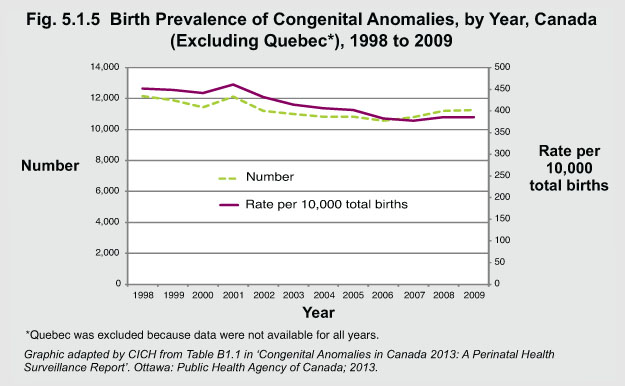Birth Prevalence of Congenital Anomalies, by Year, Canada (excluding Quebec), 1998 to 2009

…continued
It should be noted, however, that some congenital anomalies, such as gastroschisis (where the intestines are outside of the body wall), are increasing in frequency. The precise cause of this is uncertain.1 The decrease in rates among live births has been noteworthy, leading to birth prevalence below 400 per 10,000 in 2009. On the other hand, the rates of congenital anomalies in stillbirths has increased slightly, primarily because of an increase in the rate among stillbirths of very low birth weight (less than 750 g).2
1CAPSNet 2012 Annual Report. The Canadian Pediatric Surgery Network. Version 1. February 2013. http://www.capsnetwork.org/portal/Portals/0/CAPSNet/Annual%20Reports/CAPSNet%20AR%202012%20-%20FINAL_Feb%202013.pdf.
2 Public Health Agency of Canada. Congenital Anomalies in Canada 2013: A Perinatal Health Surveillance Report. Ottawa: Public Health Agency of Canada; 2013
Overall it appears that both the number of babies born with congenital anomalies and the rate per 10,000 total births decreased between 1998 and 2009 in Canada. The rate has decreased from 451.2 per 10,000 total births to 385.2, a decline of approximately 15%. This could be partially due to the decline in some of the common congenital anomalies, such as neural tube defects [view report], but also to inconsistencies in data collection. continued…
